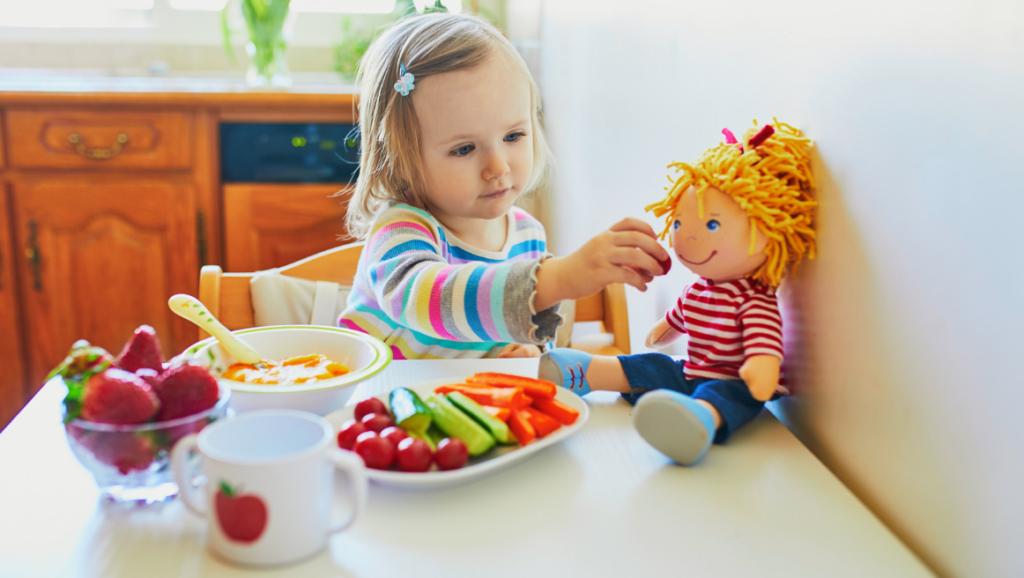Introducing your baby to solid foods is an exciting milestone, but it can also feel overwhelming. Between new textures, nutrition, and potential choking hazards, many parents worry about keeping mealtimes safe.
The good news is that with a few practical strategies, you can make feeding both safe and enjoyable. Establishing healthy eating habits early ensures proper nutrition and sets the foundation for a lifetime of positive mealtime experiences.
This guide will share tips on encouraging safe eating, recognising choking hazards, preparing age-appropriate meals, and building nutritious routines that work for both babies and toddlers.
Understanding the Basics of Safe Eating
Safety during feeding starts with understanding your child’s developmental stage. Babies and toddlers have smaller airways, limited chewing skills, and are still mastering swallowing. Foods that are too hard, small, or sticky can pose a choking risk.
It’s also important to recognise the difference between gagging and choking, a normal reflex that helps babies manage solid foods versus an emergency situation that requires immediate action. For a detailed explanation, check out this helpful guide on gagging vs choking. Knowing the difference can prevent panic and help you respond appropriately.
Age-Appropriate Food Preparation
When preparing meals for babies and toddlers, texture and size are key. For infants just starting solids, foods should be puréed or mashed to a smooth consistency. As your baby grows, gradually introducing soft, small pieces encourages chewing skills and independence.
Always supervise mealtimes and avoid offering foods that are high-risk for choking, such as whole nuts, grapes, or hard sweets. Cutting food into small, manageable pieces and softening harder textures can dramatically reduce risks.
For more detailed advice, including age-specific preparation techniques to prevent choking, this resource on food preparation tips for each age stage is invaluable. It provides guidance on portion sizes, suitable textures, and how to introduce new foods safely.
Establishing Healthy Eating Habits
Building safe eating habits goes hand-in-hand with promoting good nutrition. Toddlers thrive on routine, so offering meals and snacks at consistent times helps regulate appetite and encourages balanced eating.
Some tips to keep in mind:
- Offer Variety: Include a mix of fruits, vegetables, whole grains, and lean proteins. Exposure to different flavours and textures reduces fussiness.
- Model Healthy Eating: Children often imitate parents. Eat together whenever possible and demonstrate positive eating behaviours.
- Encourage Self-Feeding: Allow toddlers to explore feeding themselves with age-appropriate utensils. This supports independence and fine motor development.
- Keep Mealtimes Calm: Avoid distractions like screens to ensure your toddler focuses on their food and develops mindful eating habits.
Dealing with Picky Eaters
Picky eating is a normal stage, but it can challenge safe and nutritious feeding. Introduce new foods alongside familiar favourites, offer small portions, and avoid pressuring your child. Repeated exposure without stress often encourages acceptance.
Try to make mealtimes playful. Naming colours of vegetables, making funny shapes with food, or using themed plates can increase engagement. Always keep safety in mind, ensuring pieces are appropriately sized and textures are suitable for your child’s stage.

Hydration and Drinks
Toddlers need adequate fluids, primarily water and milk. Avoid sugary drinks, which can contribute to dental issues and unhealthy habits. Offer water throughout the day in small cups to encourage independent drinking while keeping hydration safe and enjoyable.
Recognising and Preventing Choking Hazards
Choking is a serious concern for young children. Always supervise mealtimes, ensure they are seated upright, and avoid distractions. Be aware of common high-risk foods and prepare them safely.
Cut grapes, cherry tomatoes, and similar items into small pieces, soften harder foods, and remove seeds and stones. Avoid large chunks of meat or sticky foods like peanut butter by spreading thinly or mixing with other ingredients.
If you want more tips on safely preparing meals and avoiding choking hazards, refer to this guide on food preparation tips for each age stage. It provides practical, stage-specific advice that every parent can apply.
Encouraging Safe Independence
As toddlers grow, encourage them to feed themselves with soft finger foods and toddler-safe utensils. This helps develop motor skills and confidence with eating. Always supervise to maintain safety while giving them autonomy.
Teaching them basic safety habits, such as sitting at the table and chewing slowly, builds lifelong safe eating behaviours.
When to Seek Guidance
Every child develops at their own pace. If you notice persistent gagging, frequent coughing during meals, or difficulty swallowing, consult a healthcare professional. Familiarising yourself with signs of gagging versus choking ensures you can act appropriately in emergencies.
You can explore further guidance on distinguishing these reflexes in the gagging vs choking resource. Understanding these differences helps prevent anxiety and promotes confident, safe feeding practices.
Making Mealtimes Enjoyable
Creating a positive eating environment encourages both safe habits and healthy attitudes towards food. Mealtimes should be relaxed, interactive, and consistent. Engage your child by talking about flavours, textures, and colours, and involve them in simple meal preparation when possible.
With patience, supervision, and proper preparation, eating can become a joyful and educational experience for your little one.

Helping Your Child Thrive
Developing safe eating habits early supports not just physical health, but also confidence and independence in toddlers. Structured routines, age-appropriate foods, and mindful supervision are essential for nurturing both nutrition and self-regulation.
When you’re ready to explore more tips, recipes, and practical guidance for safe feeding routines, Piccolo is a great resource for busy parents seeking support at every stage of weaning and toddler nutrition.

